By Don Robb
Illustrated by AnneSmith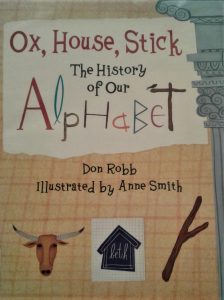
I have plenty of books in my library on the history of the English language, most of which include bits of history about the alphabet. But, when I wanted to use a different approach with my spelling students, I decided to take them as far back as possible into the story of our alphabet. I was hoping to find a book or two that had already done the work of encapsulating this history at an early-grade level, so I wouldn’t have to. When I searched our library system, this title sounded like exactly what I was looking for.
Don Robb does an excellent job of concisely outlining the progression from picture writing to symbols that stand for sounds.
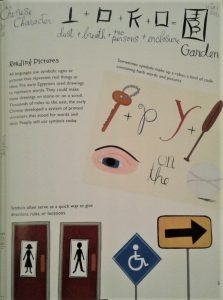
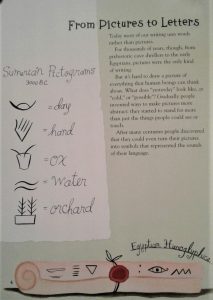
Though some of the letters in the English alphabet share similar features and history . . .
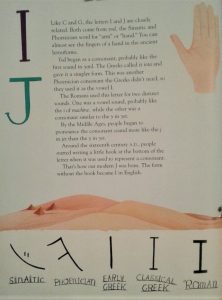
each page about a letter or letters also highlights a language question children may ask, or may not have ever considered. Why do we call it an alphabet? Who got to decide the order? Or there is a short lesson on the history of writing in general: Ancient Greeks used to write left to right on one line, right to left on the next, turning as a person plows a field. At first the Romans didn’t put spaces between words. The Egyptians invented writing material made from plants that was called papyrus.
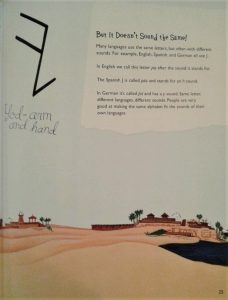
For me, one of the best recommendations for a teaching resource is that it relates substantial information without too much depth for the intended audience, but that enough interesting facts are introduced to suggest additional areas of research. Ox, House, Stick does an excellent job of that.
This book could supplement a study in different ways. I didn’t read every page about each letter in class. They are interesting, but it’s not necessary for students to know facts about every letter in order to understand the general concept. I introduced the format, and read a few pages as examples. Then I spread the additional information over two or three class times as it fit the main subject of the week. In our study of manuscripts and illumination, we’re still hundreds of years from the invention of the printing press, but I can come back to this if I need to.
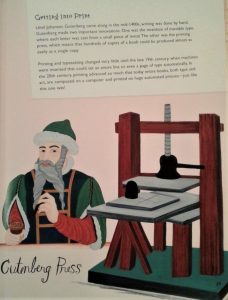
I appreciate the flexibility of this resource, and will undoubtedly come back to it with successive classes.